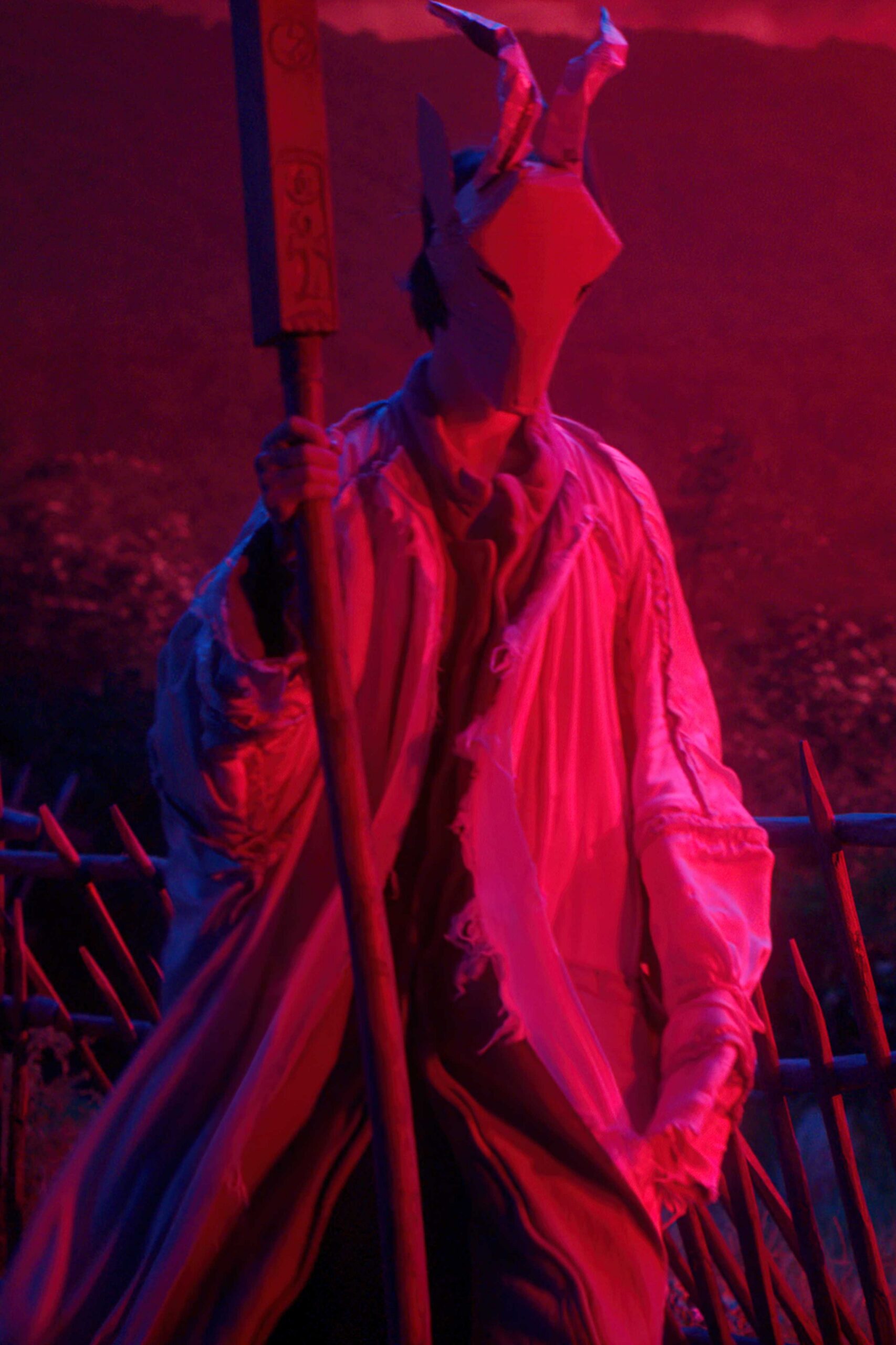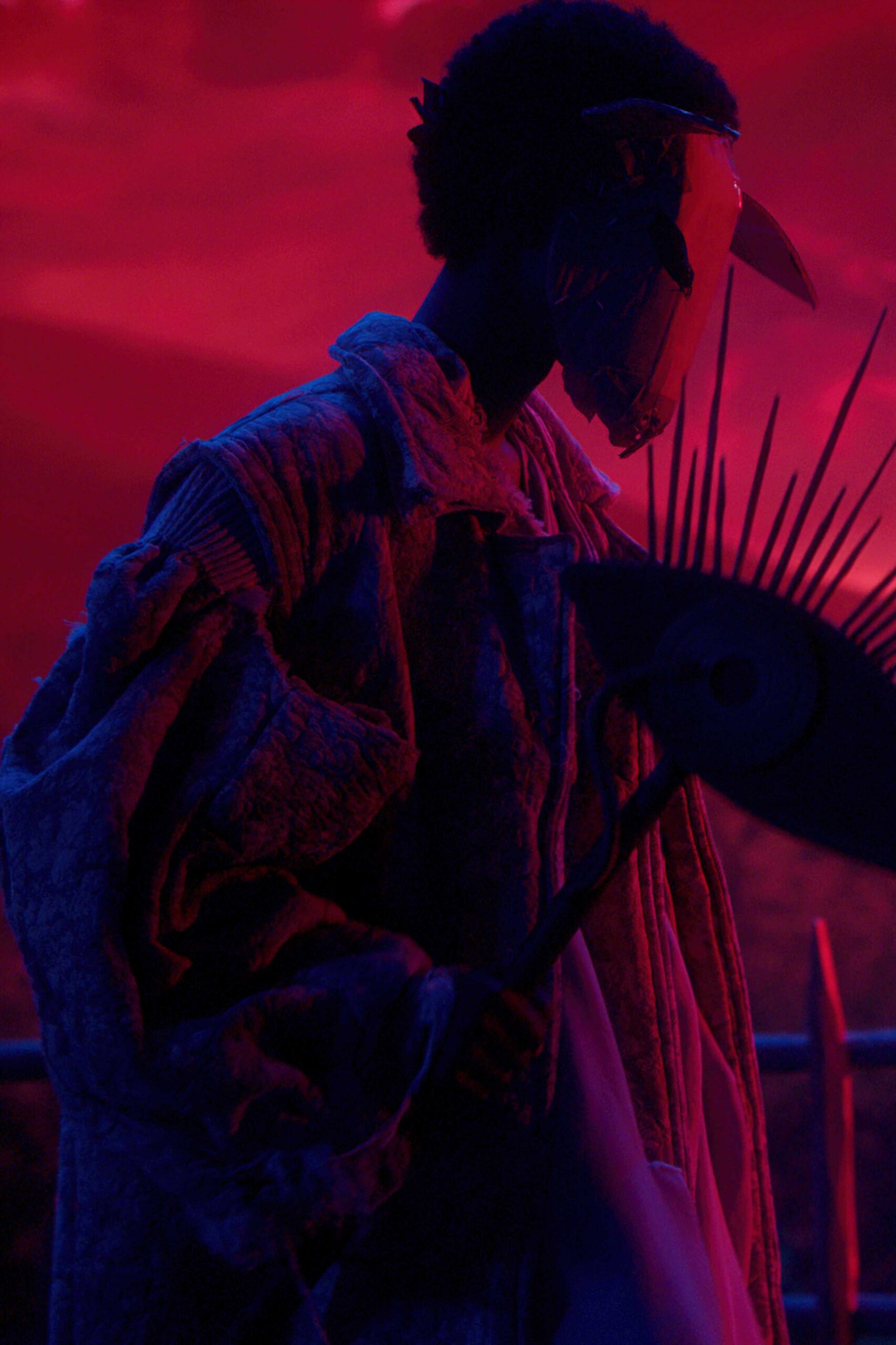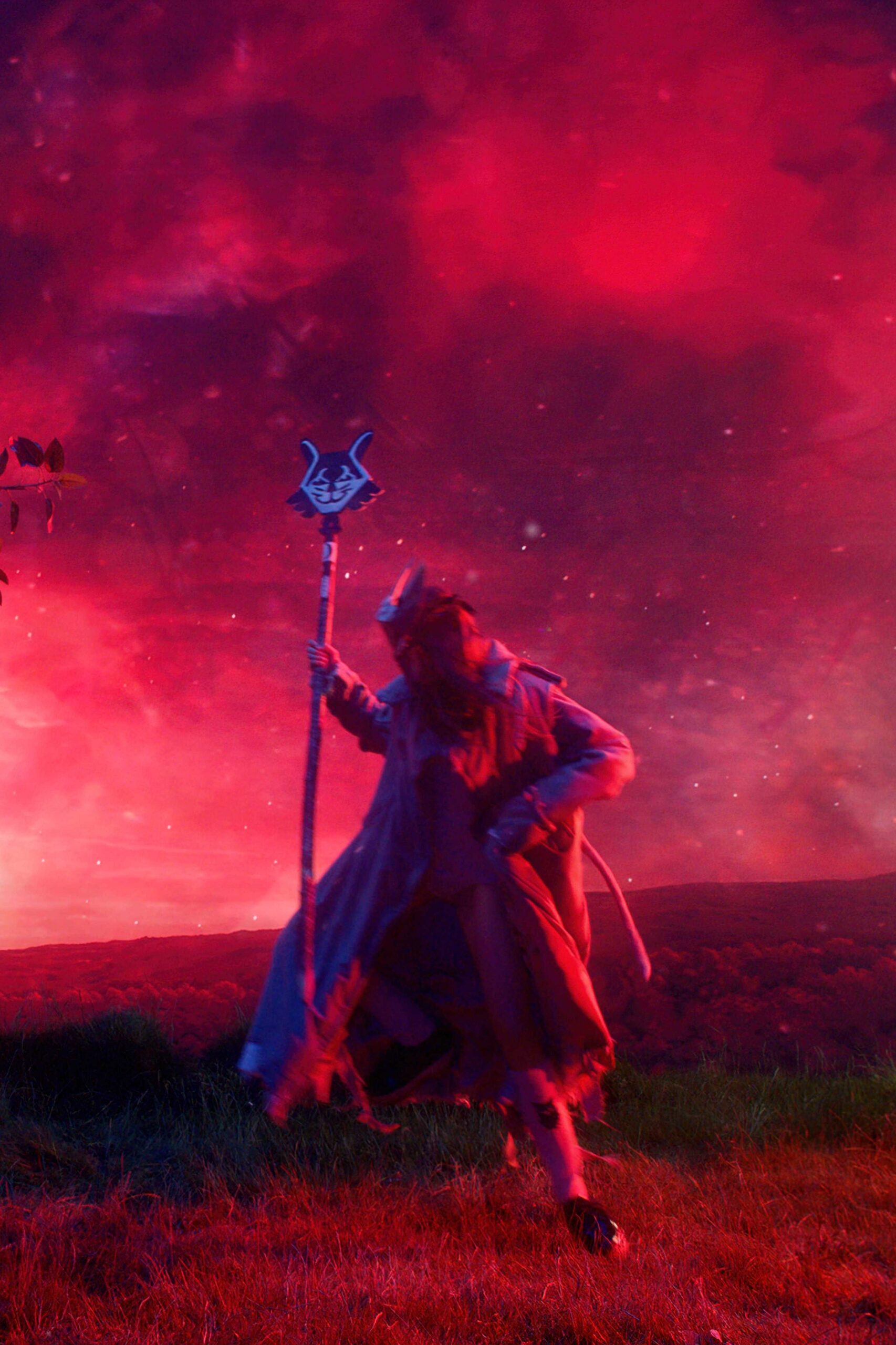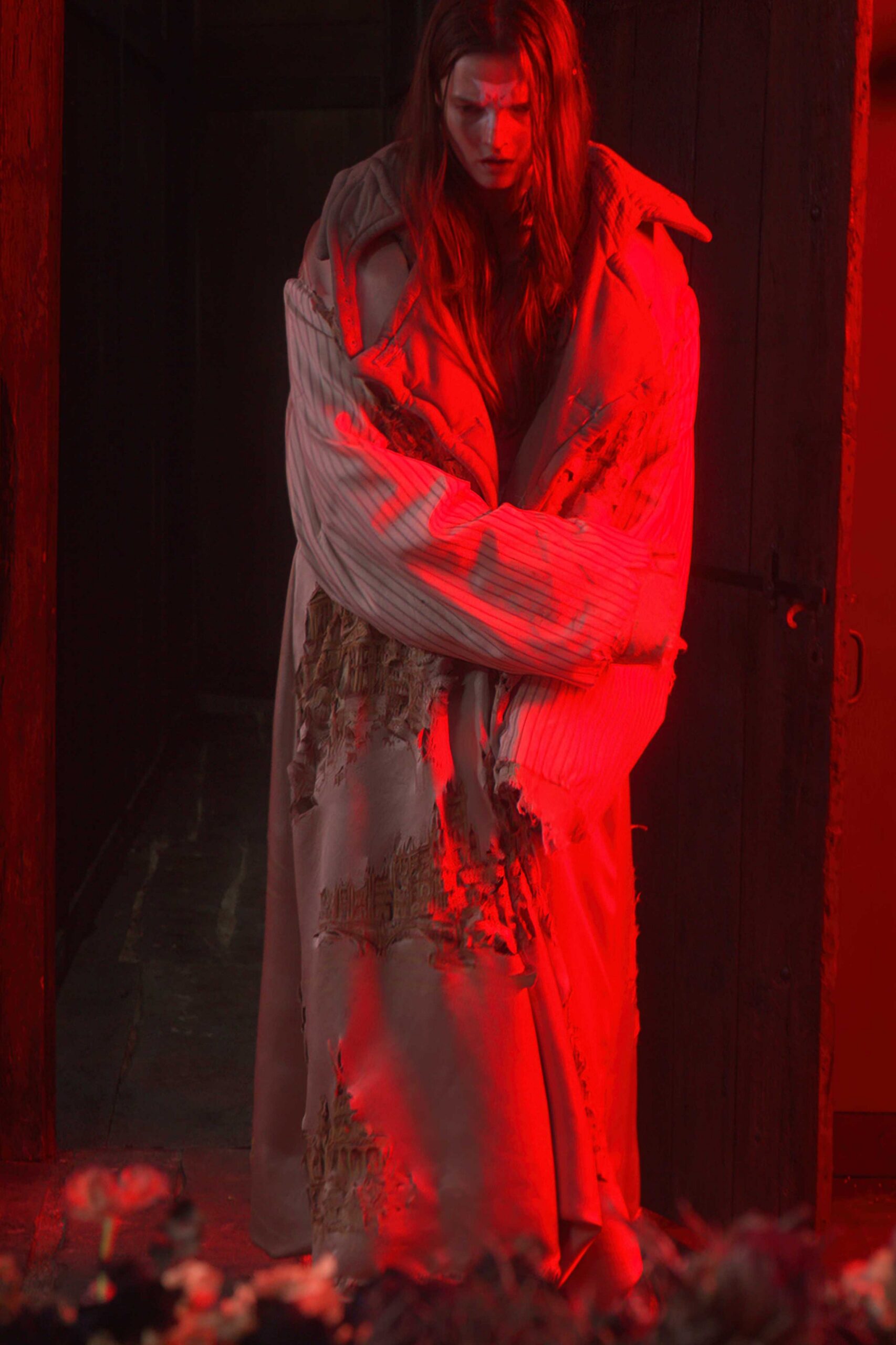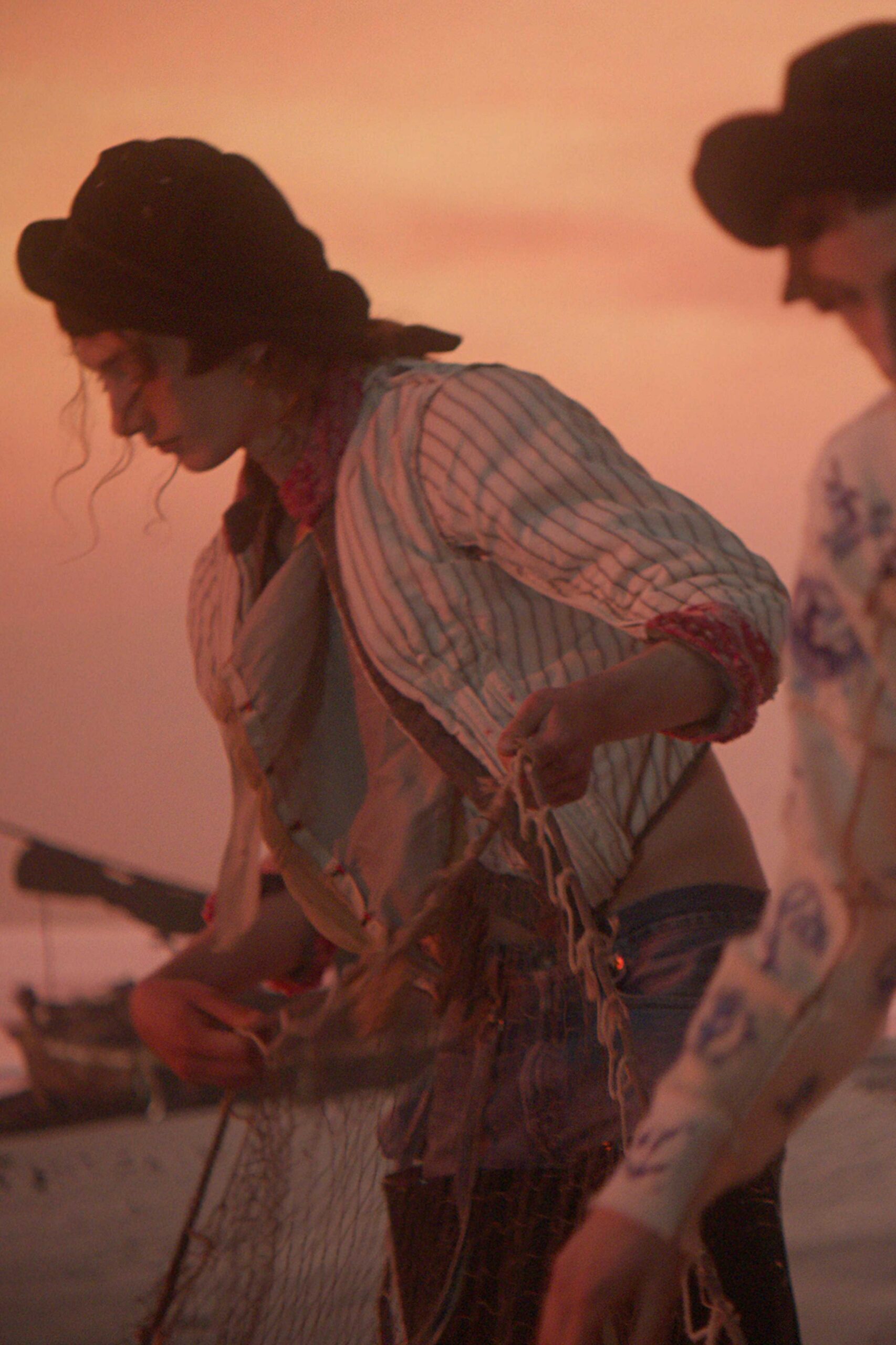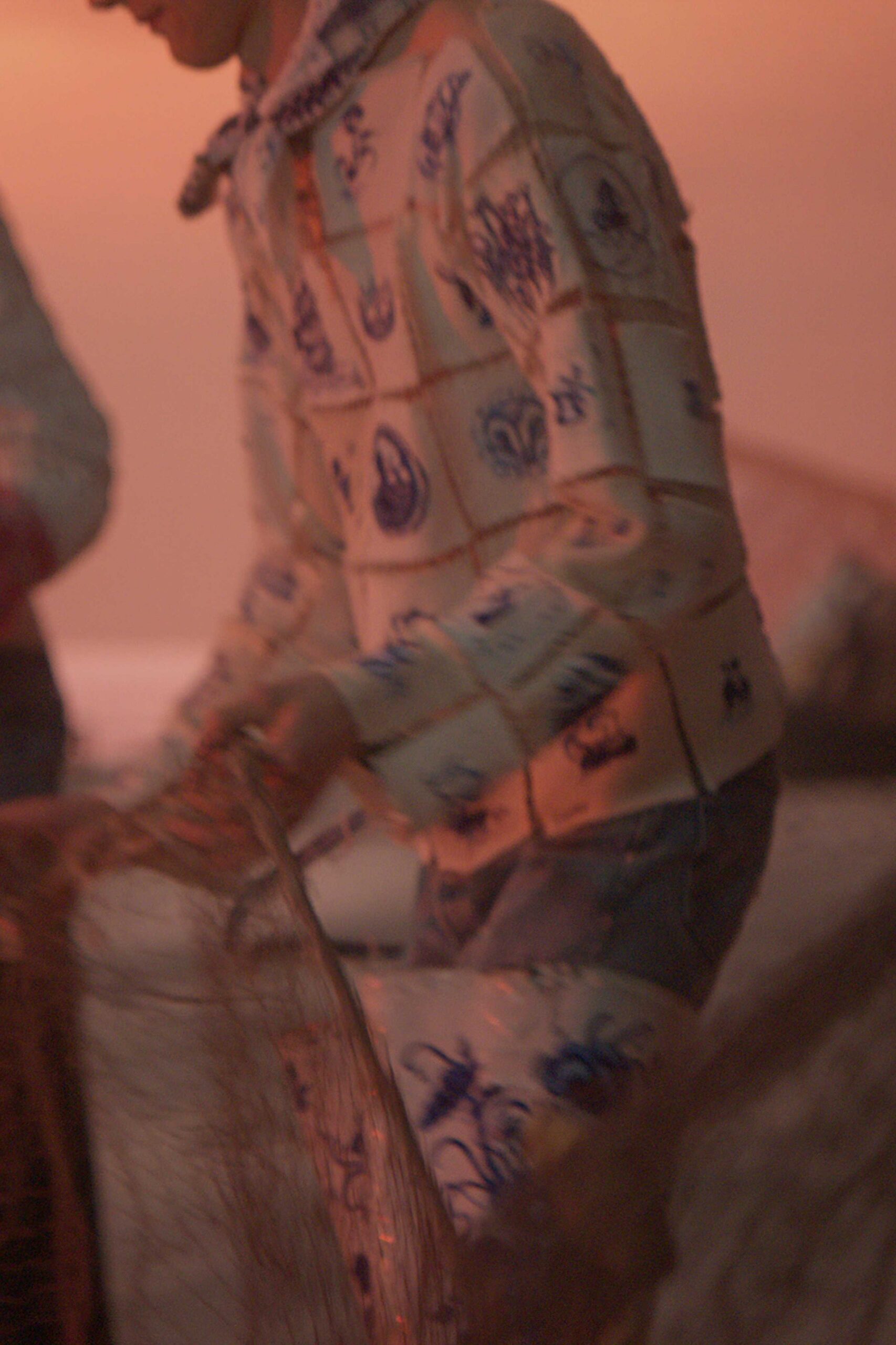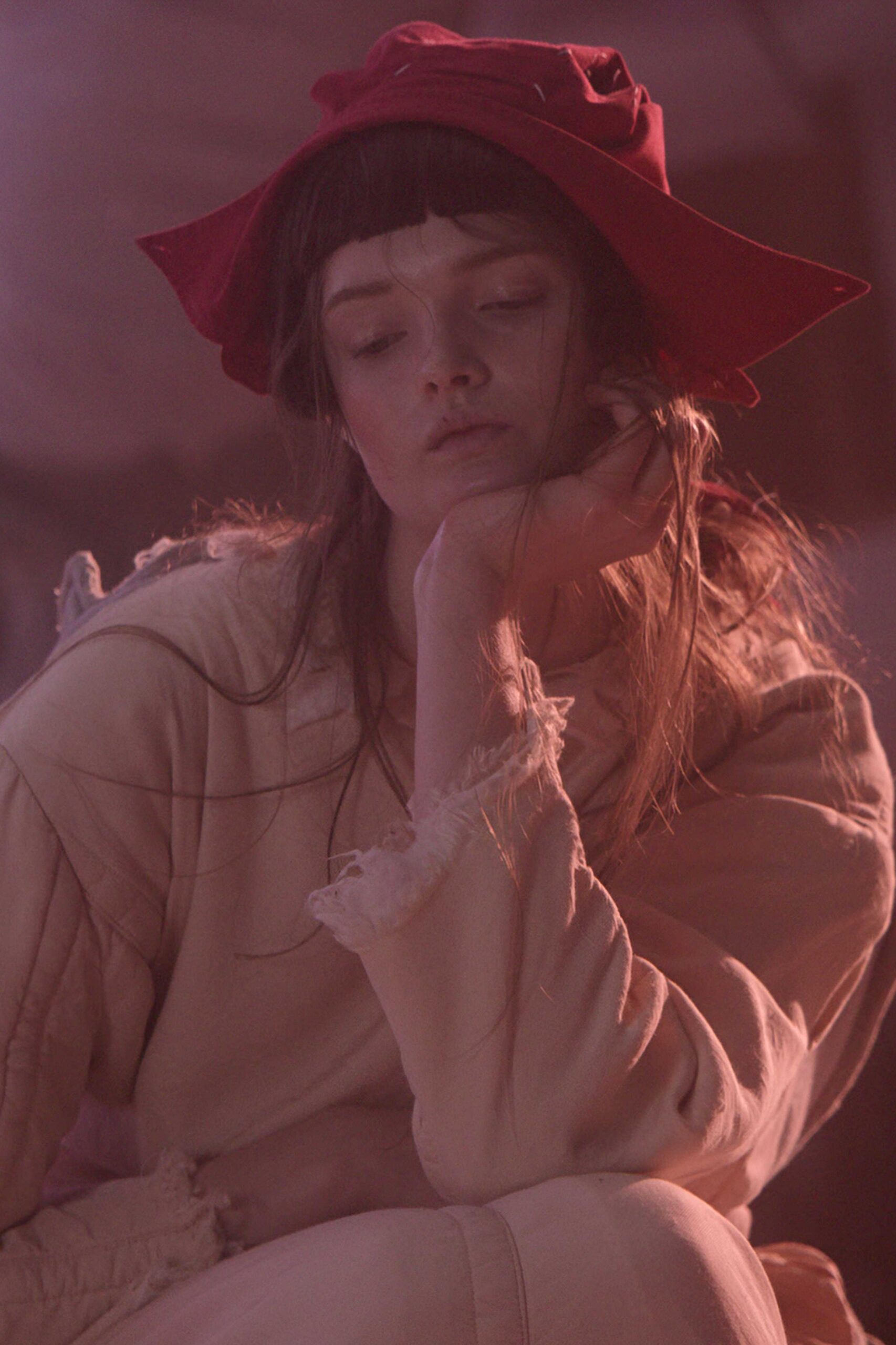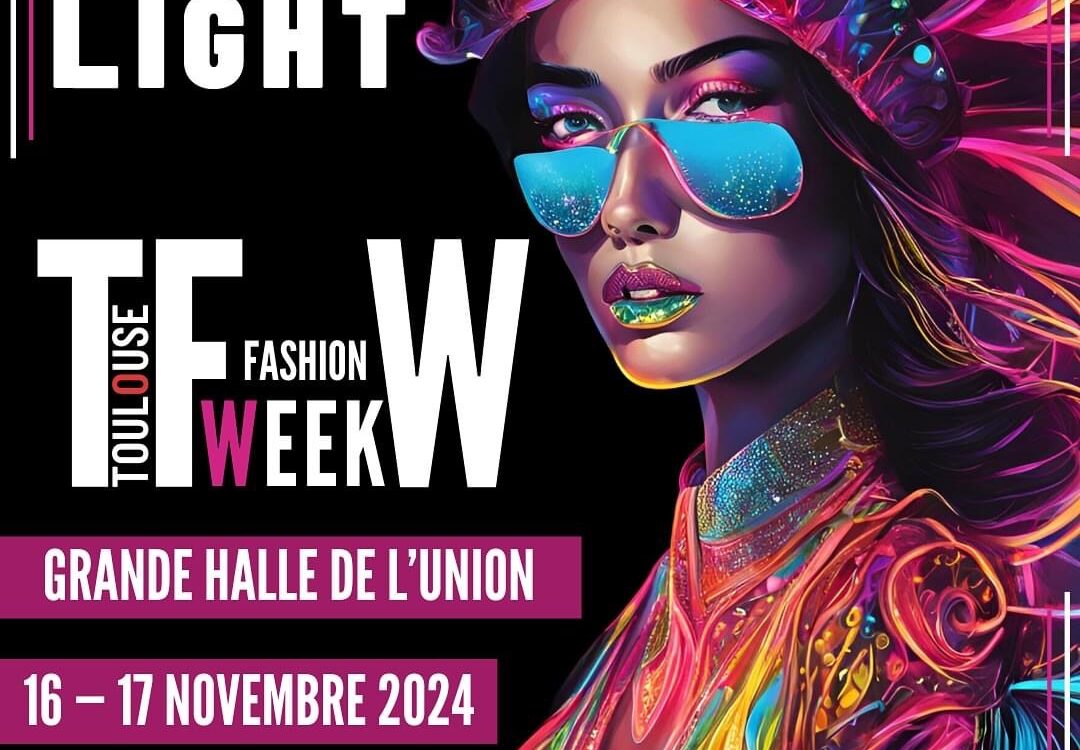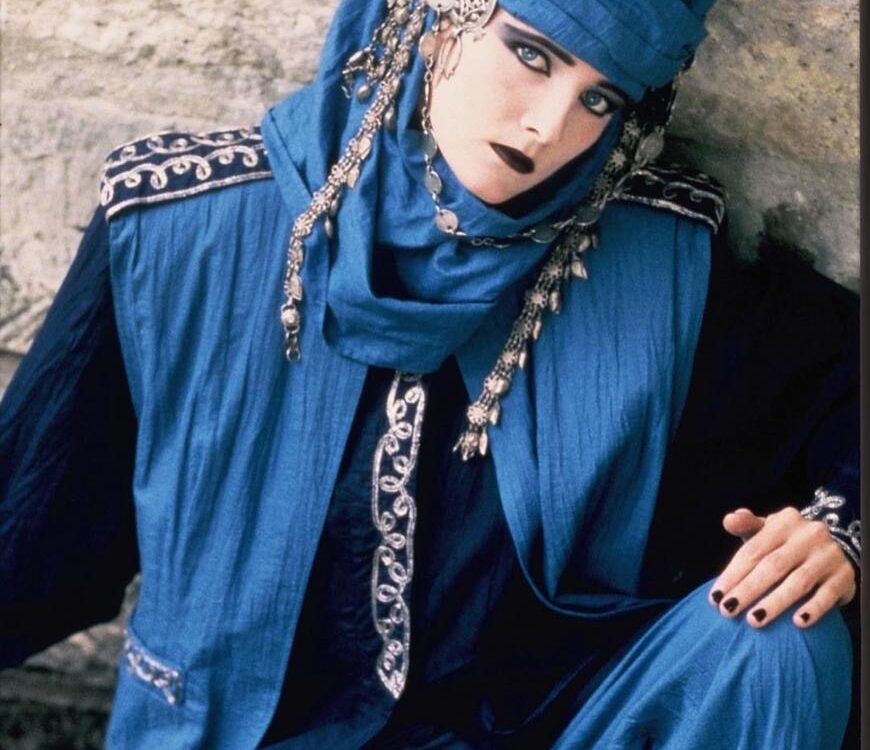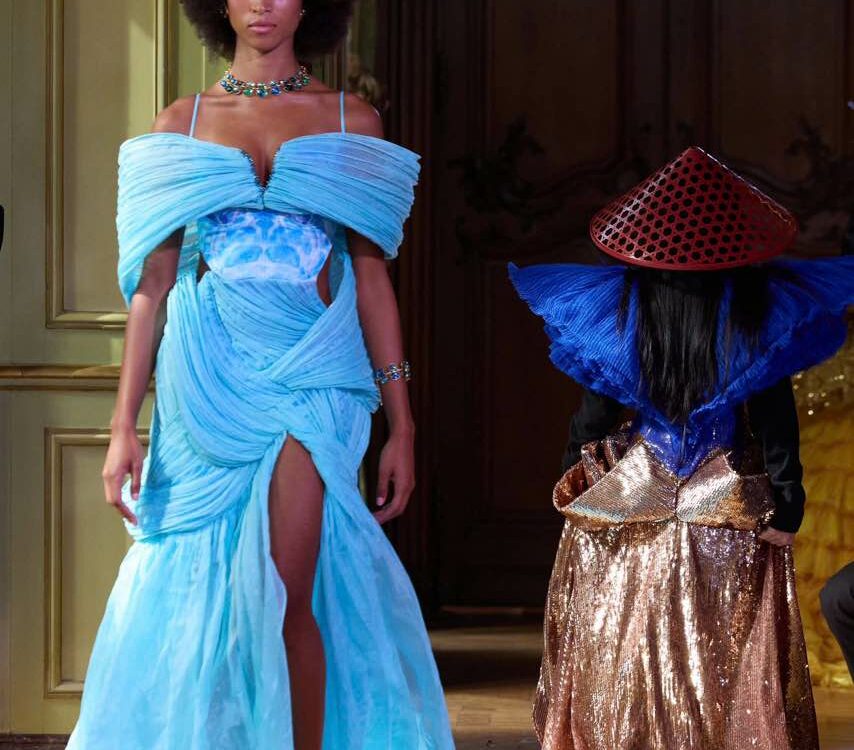Maison Margiela – Artisanal Collection 2021
Alchemy is a transformative process that challenges science and time. Driven by human instinct, it aspires to alter the forces of nature. For the 2021 Artisanal co-ed collection, Maison Margiela studies the desires of a new utopian youth connected to the circles of life, time and nature.
Creative director John Galliano identifies in the contemporary age of emergence a hankering for security found in generational objects imbued with history: that, which has been weather-beaten, blanched by moonlight, and suffused with soul by the passage of time. Through the grammar of haute couture, the quest is expressed in the alternative notion of neo-alchemy: the search for authenticity through scientific transmutations of shapes and textures of familiar garments, realised through harmonious dialogue with the natural elements.
The collection unfolds in the feature film A Folk Horror Tale, directed by Olivier Dahan and based on an original concept by John Galliano. Underpinned by the powers of time and nature, it is a story of instinct, community, and transformation. Created in symbiosis, the film’s narrative is woven into the collection itself, depicted in motifs in the lining of garments, the embroideries of knits, and the adornments of boots. Every inch of the collection is intricately crafted by hand, exercising painstaking haute couture techniques developed in the Artisanal ateliers. Charging pieces with character and history, these transformative methods are echoed in the alchemistic process that defines the predominant silhouettes, textures and palette of the collection: Essorage, a new Maison Margiela technique wherein familiar garments – often made from vintage or deadstock fabrics – are scaled up eight to twelve times only to be wrung into new shapes through Artisanal size-compressing enzymeand stonewash treatments. In the process, fabrics erode and reveal their true colours.
The practice is applied to icons of permanence: Maison Margiela’s Loden overcoat, vintage denim jacket, and t-shirt. Worn and re-worn through time, each garment has been ascribed and re-ascribed to those, who made it their own.
Through the technique of decortiqué, these staples appear as new apparitions, cut in the memory of swimwear, bustiers, or their own original form. Similarly, through Anonymity of the Lining cutting, skirts and suits are transformed into new but familiar manifestations using their own lining. The alchemistic processes intensify a reconnection with nature as an ancient representation of peace, a sentiment that resonates in codes native to the maritime and coastal wardrobes. The creed of the utopian youth, this nature-centric instinct is expressed in animal symbols – conveyed in masks and embroideries on underwear – drawing on the anthropomorphosis observed in fables passed down through generations.
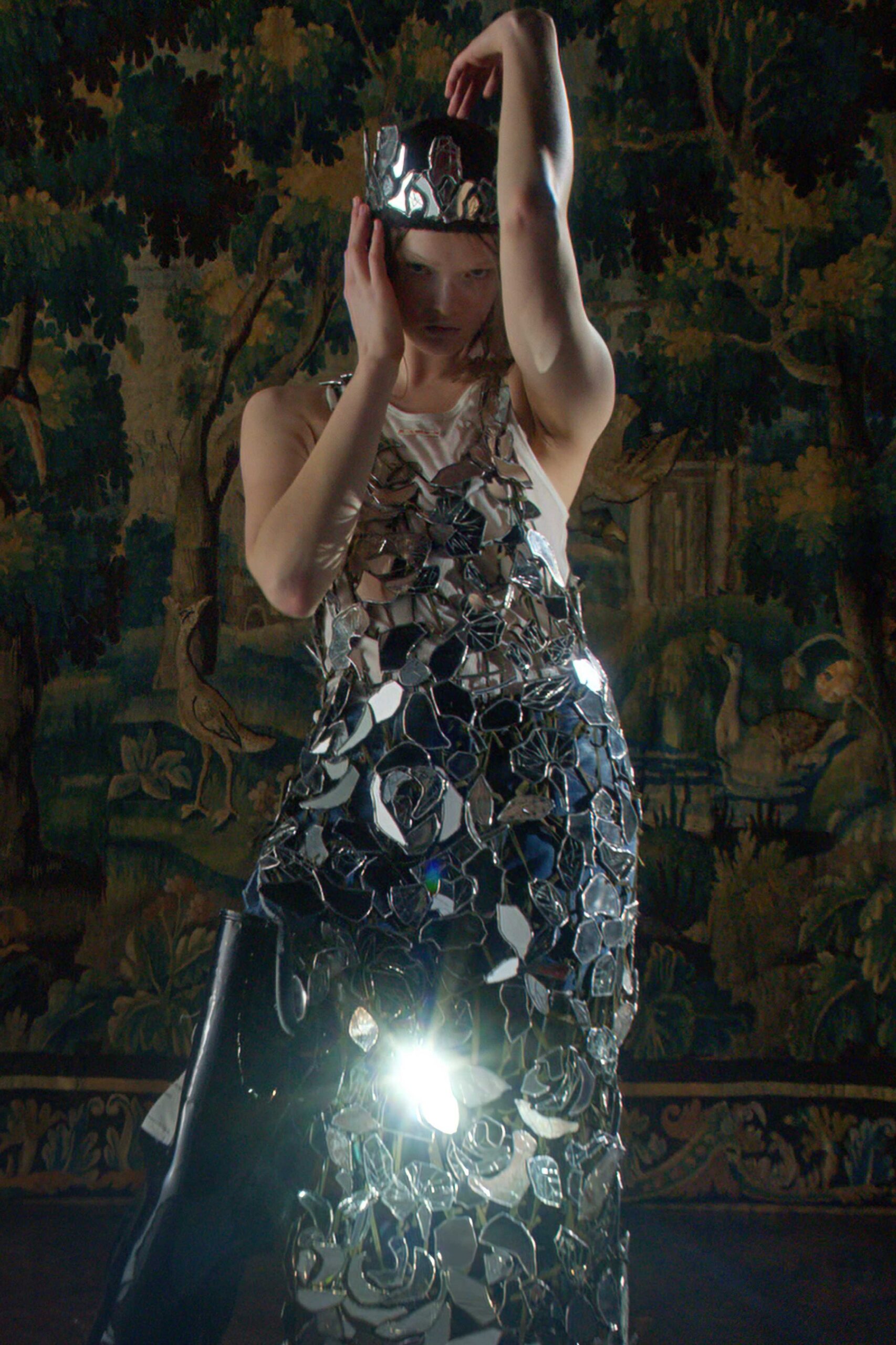
Collaborations
Creative director John Galliano invites three artists to collaborate on pieces in the collection.
A blue wool jumper interwoven with antique newspapers through hand-embroidery is created with Celia Pym. A hand-made stained mirror fragment dress with leather lacing is created with Hélène Vitali. Recicla white rubber waders spliced with wooden Tabi clogs have been hand-painted by Anna Sokolova, who created contemporary illustrations in the style of Delft Blue, distorting its classic imagery into motifs that look pretty from afar but reveal a more sinister reality when studied in detail.
Palette
The enzyme- and stonewashing treatments applied to garments throughout the collection determine the palette. Colours informed by the Dutch Renaissance become discoloured as if touched by the forces of nature and time: thunderous, windswept, and maritime.
Lavender, peach, sage, light blue and ecru are contrasted by navy, dark greens, greys and black. Delft blue appears in patterns.
Accessories
Artisanal wooden clogs created by traditional craftsmen set the foundation for shoes and boots. The Recicla Tabi Clog Wader splices the properties of the fisherman’s wader, the clog, and Maison Margiela’s split-toed Tabi shoe. Here, sourced waders are treated with several layers of paint, creating an aged and worn texture, before their soles are cut off and the upper manually stapled onto the wooden clog base with a hand-cut Tabi split.
The design also appears as a chest wader. Clog Derbies and lace-up Clog Boots are constructed from clog soles and glace calf leather uppers. The Tabi Clog Sandal features a single white glace calf leather strap stapled onto a clog sole with a hand-cut Tabi split. Jewellery has been handmade from broken antique bottles, which have undergone enzyme and sand treatments for translucid look, evoking age-old shipwrecked glass found on beaches. Highly fragile, it is used as embellishments on garments and creating trains where the clinking of bottles creates a tune. The glass pieces further make up crowns with original antique calligraphy inscriptions. A series of crowns and armour sleeves are made in carton as well as masks fashioned in the images of animals, while a transparent mask appears in plexiglass.
Finally, the collection features Maison Margiela’s signature handbag, the Glam Slam.


